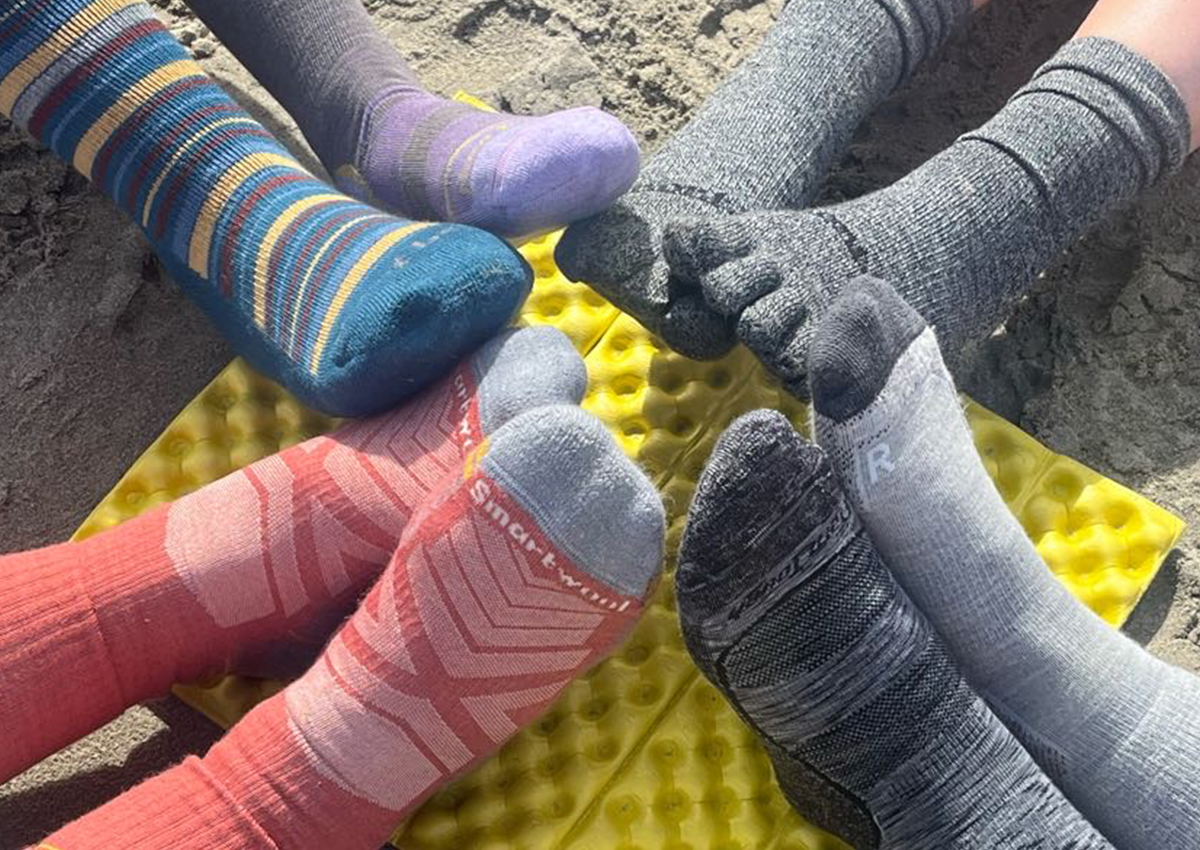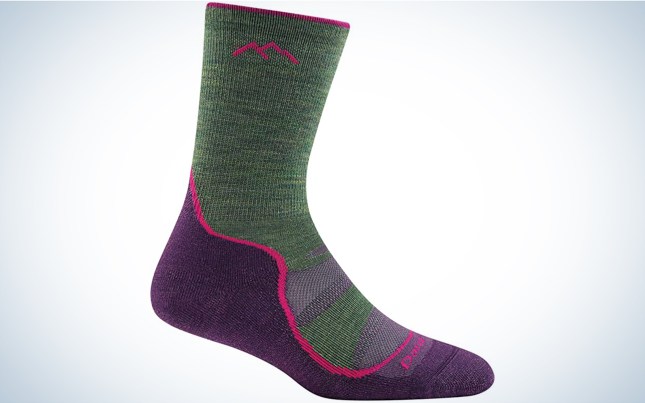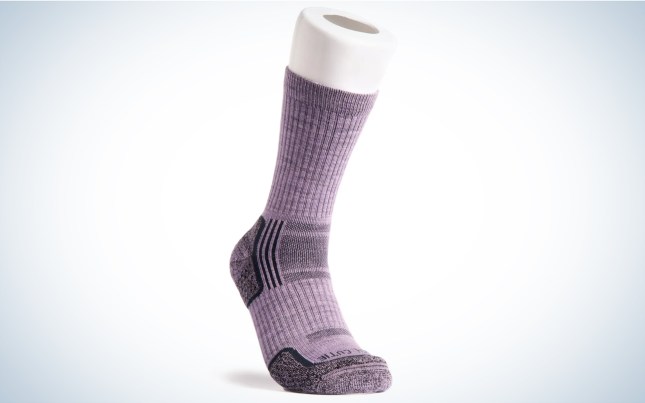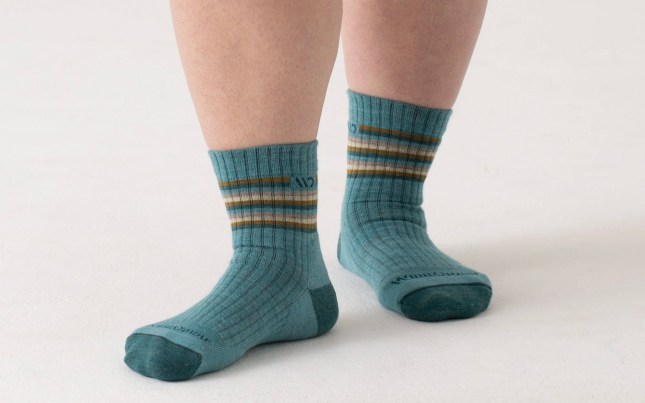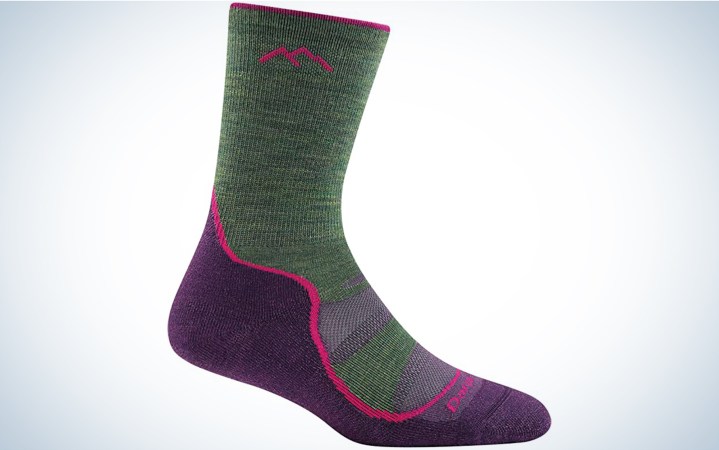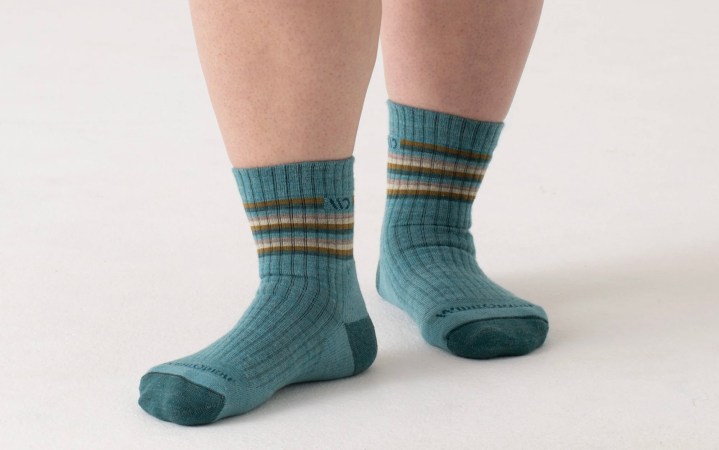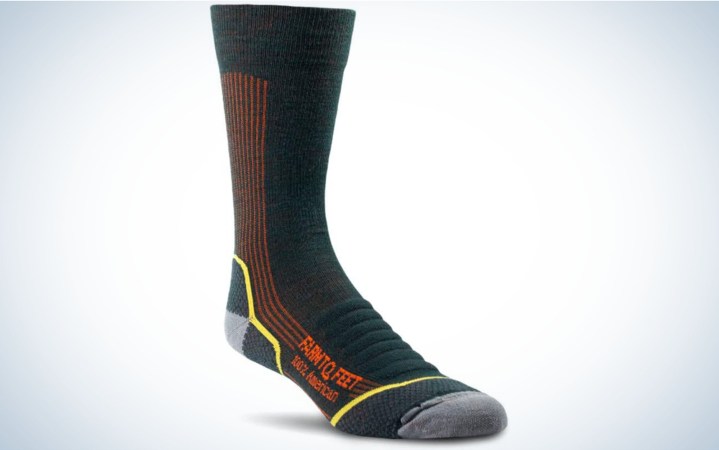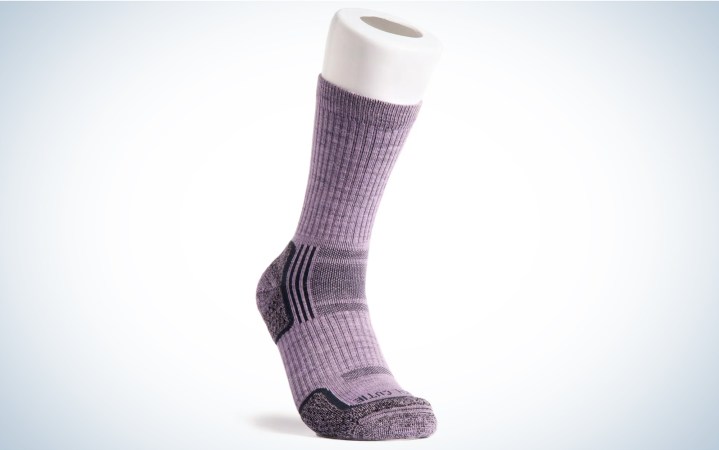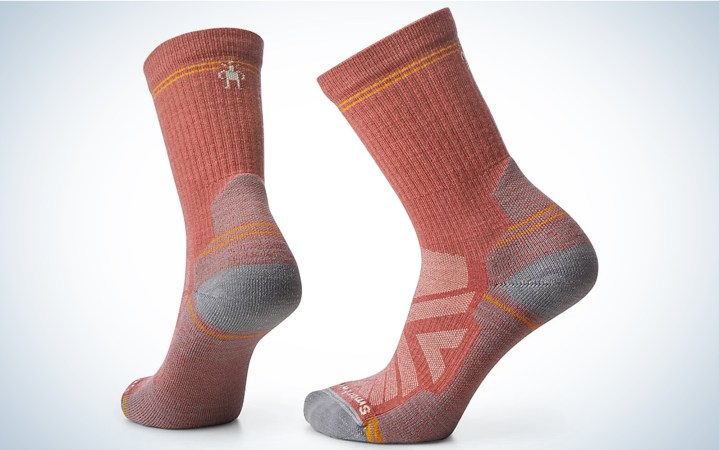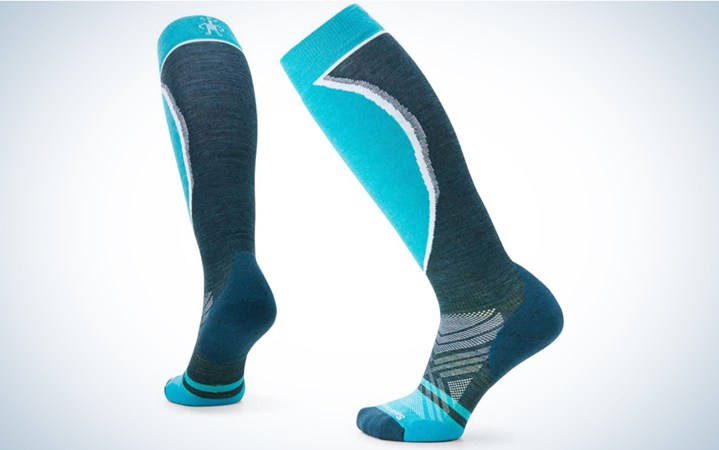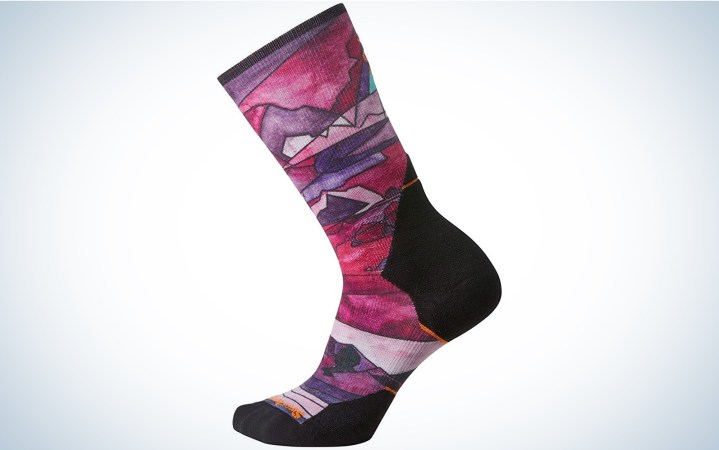We may earn revenue from the products available on this page and participate in affiliate programs. Learn More ›
For plenty of outdoors people wool socks are the top choice, specifically merino wool socks. No matter how hard synthetic fibers try, they just can’t match the temperature regulation, wicking potential, and odor control of wool. To find the best wool socks, we took seven different pairs from the likes of Darn Tough, Smartwool, and Farm to Feet out on a section of the 362-mile Oregon Coast Trail to see which could go the distance.
Best Overall: Darn Tough Light Hiker Micro Crew
↓ Jump to Review
Best for Wide Feet: Wide Open Cushioned Micro Crew Socks
↓ Jump to Review
Best Made in the USA: Farm to Feet Damascus ¾ Crew Light Targeted Cushion
↓ Jump to Review
Most Comfortable: Tough Cutie Merino Wool Hiker Crew
↓ Jump to Review
Best Ventilation: Smartwool Hike Light Cushion Crew Socks
↓ Jump to Review
Best for Skiing: Smartwool Women’s Ski Targeted Cushion Over The Calf Socks
↓ Jump to Review
Best for Trail Running: Smartwool Athlete Edition Run Mountain Print Crew Socks
↓ Jump to Review
| Sock | Price | Warranty | Merino content | Other fibers | Wash instructions | Made in the USA? |
| Darn Tough Light Hiker Micro Crew | $24 | Lifetime | 43% | 54% nylon, 3% spandex | Wash in warm water, tumble dry low | Yes, with some imported wool |
| Farm to Feet Damascus ¾ Crew Light Targeted Cushion | $24 | Lifetime | 44% | 52% nylon, 4% spandex | Wash in cold water, tumble dry no heat | Yes, with U.S. wool |
| Tough Cutie Merino Wool Hiker Crew | $25 | Limited lifetime | 45% | 51% nylon, 4% spandex | Wash in cold water, tumble dry low | Yes, with imported wool |
| Icebreaker Crew Medium Cushion | $26 | One year | 66% | 32% nylon, 2% spandex | Wash in cold water, line dry | Yes, with imported wool |
| Montbell Merino Wool Travel 5 Toe Socks | $17 | Limited lifetime | 52% | 21% polyester, 18% nylon, 9% polyurethane | Wash in cold water, line dry | No |
| Smartwool HIke Light Cushion Crew Socks | $24 | Two years | 56% | 42% nylon, 2% elastane | Wash in warm water, tumble dry low | Yes, with imported wool |
| Point6 Essential Light Crew | $25 | Lifetime | 62% | 31% nylon, 7% spandex | Wash in cold water, tumble dry low | Yes, with imported wool |
| Smartwool Women’s Ski Targeted Cushion Over The Calf Socks | $28 | Two years | 57% | 10% nylon, 30% recycled nylon, 3% elastane | Wash in warm water inside out, tumble dry low | Yes, with imported wool |
| Smartwool Athlete Edition Run Mountain Print Crew Socks | $27 | Two years | 53% | 32% nylon, 11 percent recycled nylon, 3% elastane, 1% polyester | Wash in warm water inside out, tumble dry low | Yes, with imported wool |
How We Tested the Best Wool Socks
We tested wool socks as part of the inaugural Outdoor Life backpacking gear testing trip. Our team of experienced backpackers (ranging from a lifetime total of 500 miles to 11,000 miles) took wool socks from seven of the most popular manufactures on a section hike of the Oregon Coast Trail to see which impressed and which we’d leave at home. We wore these socks primarily with trail runners and hiking sandals, and switched them out daily—sometimes using different socks on each foot to better understand how one stacked up against another.
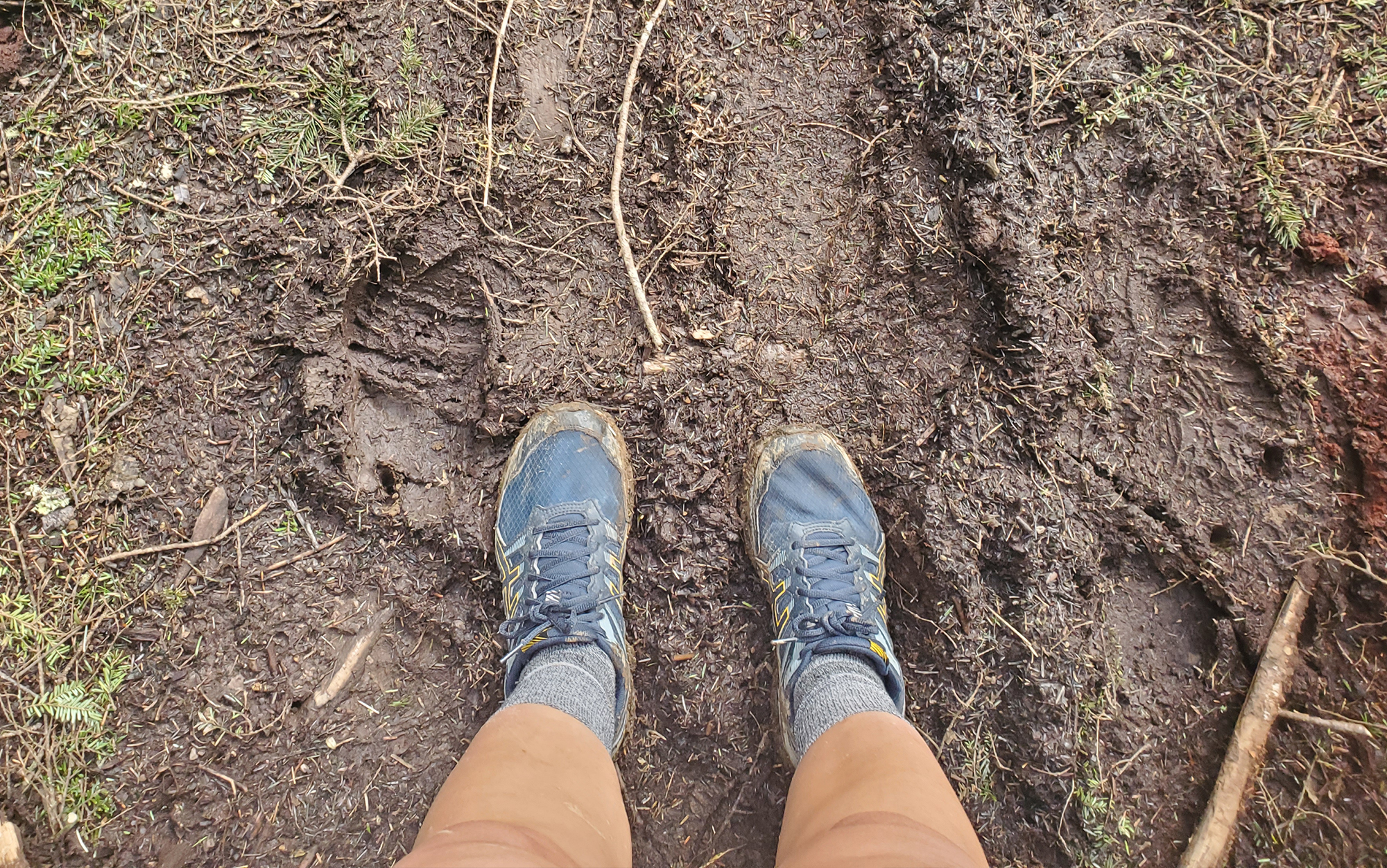
The Oregon Coast offered up a range of tough conditions for the socks we looked at, including long stretches of sand, deep mud, and high humidity. We assessed socks for comfort, fit, and how prone they were to causing blisters. At the end of the testing trip, our testers took socks back to their usual stomping grounds to continue testing: Alaska, Utah, and the Cascade Range. Knowing how tough outdoors enthusiasts can be on their socks, we also considered warranty policies.
Best Wool Socks of 2023: Tested & Reviewed
Best Overall: Darn Tough Light Hiker Micro Crew
Key Features
- Available Sizes: Men’s 5.5-17, women’s 4.5-11.5
- Fiber Content: 43 percent merino wool, 54 percent nylon, 3 percent spandex
- Lifetime warranty
- Made in the USA with some imported materials
Pros
- Comfortable
- High performing
- Great warranty
- Fits a wide range of foot sizes
Cons
- None that we’ve found yet
Our testers all agree: The Darn Tough Light Hiker is exactly what a wool sock should be. The tightness of the weave is comfortable in beach grit and forest mud alike. It hugs your foot just enough to stay perfectly in place, but not so much to restrict movement or blood flow. It’s got plenty of ventilation out the top and a nice cushioned underfoot. And when they eventually give out (no sock is truly built for life for a thru-hiker), Darn Tough will replace them (multiple of us had tested that part out, too). That takes the price tag of these socks from being on the steep side to a total steal. And plenty of day hikers may never need to replace them at all: A single pair can easily go for 800 miles or more.
Most of us on the Oregon Coast Trail had used Darn Tough Light Hikers before, and this trip reconfirmed our commitment to this sock. It’s one of the biggest no-brainer choices when I’m packing for a trip. They are such high-performers that they typically pull double-duty for me as everyday socks, too, and they are even what I wore on my first deer hunt. The only time they stay in my closet is when temperatures plunge below freezing—then I upgrade to Darn Tough’s heavyweight hunting sock.
Best for Wide Feet: Wide Open Cushioned Micro Crew Socks
Key Features
- Unisex sizing fits men’s 2.5-12, women’s 4.5-14
- Fiber Content: 65 percent merino wool, 33 percent nylon, 2 percent spandex
- Lifetime warranty
Pros
- Comfortable
- Great warranty
- Built to accommodate thicker calves and wider feet, up to 4E
Cons
- A newer product that we’re still testing
Since our original test of the best wools socks, Darn Tough created a new product line under a new banner called Wide Open. I shared a pair of their socks with Jac “Top Shelf” Mitchell, who has E width feet and calves worthy of a thru-hiker, and we were both impressed by the difference. Where the Darn Tough socks had been digging into her calves enough to leave a dent, the Wide Open equivalents sat comfortably without riding down. We’ll be continuing to monitor the performance and durability of this sock to ensure it lives up to the Darn Tough standards we’ve come to expect, but if you’ve struggled with a too-constrictive fit from socks in the past, this is one to have on your radar now.
Best Made in the USA: Farm to Feet Damascus ¾ Crew Light Targeted Cushion
Key Features
- Available Sizes: Men’s 6-14.5, women’s 4-12.5
- Fiber Content: 44 percent merino wool, 52 percent nylon, 4 percent spandex
- Lifetime warranty
- Made in the USA with American wool
Pros
- Comfortable
- Uses U.S. wool in addition to U.S. manufacturing
Cons
- Padding on the upper was a touch much for our testers
While nearly all of the best sock brands are based out of the U.S., Farm to Feet takes this to the next level by sourcing the raw materials (merino wool, nylon, and spandex) from U.S. suppliers as well. That supports American workers and businesses, and cuts the overall carbon emissions by shrinking the distance raw materials travel to Farm to Feet’s North and South Carolina manufacturing facilities.
Farm to Feet’s Damascus sock is well padded on both the top and bottom, and made from a high-performing blend of merino wool and nylon. For our testing crew, the elastic along the upper was a hair tight on our calves (serious backpackers rarely have skinny legs), and the extra bulk from the upper padding took up a noticeable amount of space in our shoes. While this sock doesn’t quite have the versatility of the Darn Tough Light Hiker, it’s an excellent mid to late season option. When the temperatures run even colder than that, check out Farm to Feet’s Kodiak.
Most Comfortable: Tough Cutie Merino Wool Hiker Crew
Key Features
- Available Sizes: Women’s 4-13
- Fiber Content: 45 percent merino wool, 51 percent nylon, 4 percent spandex
- Limited lifetime
- Made in the USA with imported materials
Pros
- Extremely comfortable
- WRAP-certified factory
- Women-owned business that uses majority women-owned vendors
Cons
- No men’s options
It’s tough to convince our testers that there might be a sock that they like more than Darn Tough, but the Tough Cutie Merino Wool Hiker came close. The Tough Cutie Hiker has a great fit, wrapping around the arch with just a touch of spandex to stay in place. It’s cushioned across the heel and the entire ball of the foot. There is great venting and flex across the top of the ankle, maximizing range of motion.
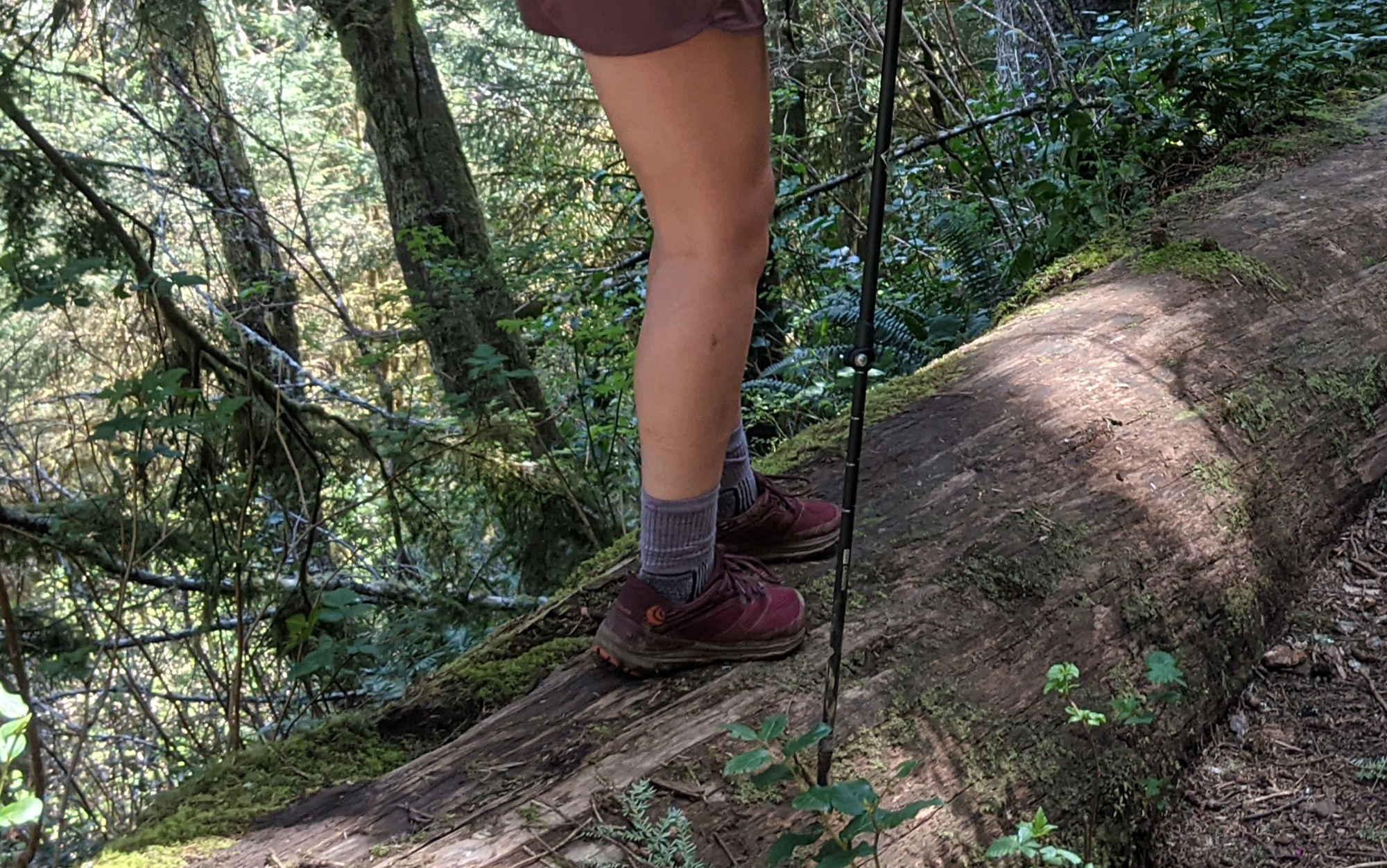
The only drawback is that there are no wide width or men’s options currently available, which may be limiting for women who typically purchase men’s socks and shoes to accommodate a wider width foot.
Best Ventilation: Smartwool Hike Light Cushion Crew Socks
Key Features
- Available Sizes: Men’s 6-14.5, women’s 4-12.5
- Fiber Content: 56 percent merino wool, 42 percent nylon, 2 percent elastane
- Two-year warranty
- Made in the USA with imported materials
Pros
- Great ventilation
- Soft and comfortable
Cons
- Limited warranty
Our Oregon Coast Trail testing trip took us from chilly 40-degree mornings to 80-degree full-sun afternoons. We oscillated between puffer jackets (and puffer pants) and shorts with the best hiking shirts. But our socks had to pull double-duty, keeping our feet warm at the start of the day without overheating when the mercury jumped. Of all the socks we looked at, the Smartwool Hike had the best ventilation on top, which accentuates the wicking power of its 56 percent merino content. It was also one of the softer socks we tested, earning praise from our testers.
The biggest downside to the Smartwool Hike is its warranty—only two years. If you’re looking for a true lifetime sock, one of the other picks on this list will serve you better.
While Smartwool also makes our favorite sock for skiing, for everyday cold-weather temps their Mountaineer Classic Edition Maximum Cushion Crew Socks is a best-in-class choice.
Best for Skiing: Smartwool Ski Targeted Cushion Over The Calf Socks
Key Features
- Available Sizes: Men’s 6-14.5, women’s 4-12.5
- Fiber Content: 57 percent merino wool, 40 percent nylon, 3 percent elastane
- Two-year warranty
- Made in the USA with imported materials
Pros
- Targeted cushion
- Body mapped ventilation
Cons
- Limited warranty
Smartwool’s body-mapped ventilation excels in a ski sock when you’re working your calves and your feet are stuck in thick, tight ski boots. I prefer this location-specific breathability opposed to an all-over thinner sock because Smartwool’s targeted cushion protects my shin and feet from hot spots. The women’s specific fit means the sock doesn’t slip or bunch even in high-intensity uphills when backcountry touring.
The cushion is perfectly placed giving me noticeable comfort and temperature control for long days on the slopes. They repel odor so well that as long as I properly air dry them after use, I can re-wear them for up to two weeks, skiing two to three times a week. While Darn Tough has my heart while hiking, these are my go-to ski socks. —Ashley Thess
Best for Trail Running: Smartwool Athlete Edition Run Mountain Print Crew Socks
Key Features
- Available Sizes: Men’s 6-14.5, women’s 4-12.5
- Fiber Content: 49 percent merino wool, 45 percent nylon, 4 percent elastane, 2 percent polyester
- Two-year warranty
- Made in the USA with imported materials
Pros
- Great performance
- Fun designs
- No slip
Cons
- Expensive
Trail runners need socks that can put up with abuse after abuse and still perform. The Smartwool Athlete Edition Run Mountains start with a big chunk of merino wool (excellent for moisture management and temperature control) and then add in almost as much nylon for durability. To tackle one of the biggest failure points for running socks (the toes), these also have an extra chunk of cushioning—also useful if you bang your toes on an errant root during a run. I’ve found during testing that these socks stay in place better than anything I’ve tried. I never think about them when I’m running, which also means they’re always the pair I reach for before heading out.
How to Choose the Best Wool Socks
Wool Qualities
Wool is an excellent fiber for hiking socks because it is semi-hollow. In cold temperatures, warm air is trapped inside of the fibers, helping to keep your feet warm. In warm temperatures, the semi-hollow structure can hold more liquid than a solid fiber would, absorbing some of the sweat from your feet while leaving the fabric itself dry to the touch.
Wool is also naturally antimicrobial, due to the lanolin content, reducing odor better than existing chemical treatments. The wool used in the best wool socks is almost always merino wool, because it is a naturally smoother fiber, making it less scratchy.
Wool Content of the Best Wool Socks
To accrue noticeable benefits from the wool in your socks, they must make up a significant percentage of the overall fiber content. Be wary of so-called wool socks that contain less than 30 percent wool, as these will tend to perform more like typical synthetic socks than wool socks. The corollary to that is that wool is not durable enough to be the only fiber in a wool sock, so it is typically augmented with nylon, and sometimes polyester. Elastic is also typically added to give the socks enough stretch to conform to your feet.
Comfort
Wool socks should be soft and comfortable, not scratchy. They get this way by using merino wool fibers, which are naturally smoother than other types of wool. Before committing to a particular brand or style of sock, it’s best to spend some time hiking around in a single pair, putting it through the laundry periodically, to ensure that it feels good on your feet for the long haul.
Thickness
While many people associate cozy thick wool socks with wintertime adventuring, thin wool socks are an excellent choice for hot-weather activities due to merino’s wicking ability and odor control.
Longevity
All hiking socks give out eventually, but some last considerably longer than others. The most durable socks are typically less soft and more expensive, so consider how important each of these factors are to you when making your selection. Several wool sock brands also provide exceptionally good warranties, so keep that in mind if you’re hard on your gear.
Price Point for the Best Wool Socks
While an individual pair of hiking socks is (usually) affordable, small differences in price can add up when you need multiple pairs. That being said, I recommend aiming for a sock in the $20 to $25 range for everyday hiking, as the lifespan of these higher quality hiking socks usually justifies the higher price tag.
Read Next: The Best Hiking Underwear for Women of 2023
FAQs
The best hiking socks will have between 40 and 70 percent wool.
Socks that are made from 100 percent wool will tend to be less durable than those that are blended with more durable nylon fibers.
High-quality wool is typically merino wool and will be reasonably soft to the touch and not scratchy. While high-quality merino wool is less likely to pill than lower quality wool, thinner wool, especially superfine wool, is very prone to pilling, making this a less useful metric for assessing quality.
Modern wool socks are meant to be worn directly against the skin and should not be itchy. The exception to that is individuals with wool allergies, who will likely still experience wool socks as itchy.
Final Thoughts on the Best Wool Socks
At the end of the day, the best wool socks are the ones that you never think about: the socks you wear for five days straight without smelling, that dry out quickly after wading through a knee-high stream, that can survive endless laundering cycles, and when they do finally give out, have a great warranty policy. After testing the seven leading socks with five experienced backpackers and thru-hikers, we’re confident that any of the below options will keep your feet comfortable and dry on your next outdoor adventure.
- Best Overall: Darn Tough Light Hiker Micro Crew
- Best Made in the USA: Farm to Feet Damascus ¾ Crew Light Targeted Cushion
- Best Weave: Tough Cutie Merino Wool Hiker Crew
- Highest Merino Content: Icebreaker Crew Medium Cushion
- Best Toe Sock: Montbell Merino Wool Travel 5 Toe Socks
- Best Ventilation: Smartwool HIke Light Cushion Crew Socks
- Best for Wide Feet: Point6 Essential Light Crew
- Best for Skiing: Smartwool Women’s Ski Targeted Cushion Over The Calf Socks
- Best for Trail Running: Smartwool Athlete Edition Run Mountain Print Crew Socks
